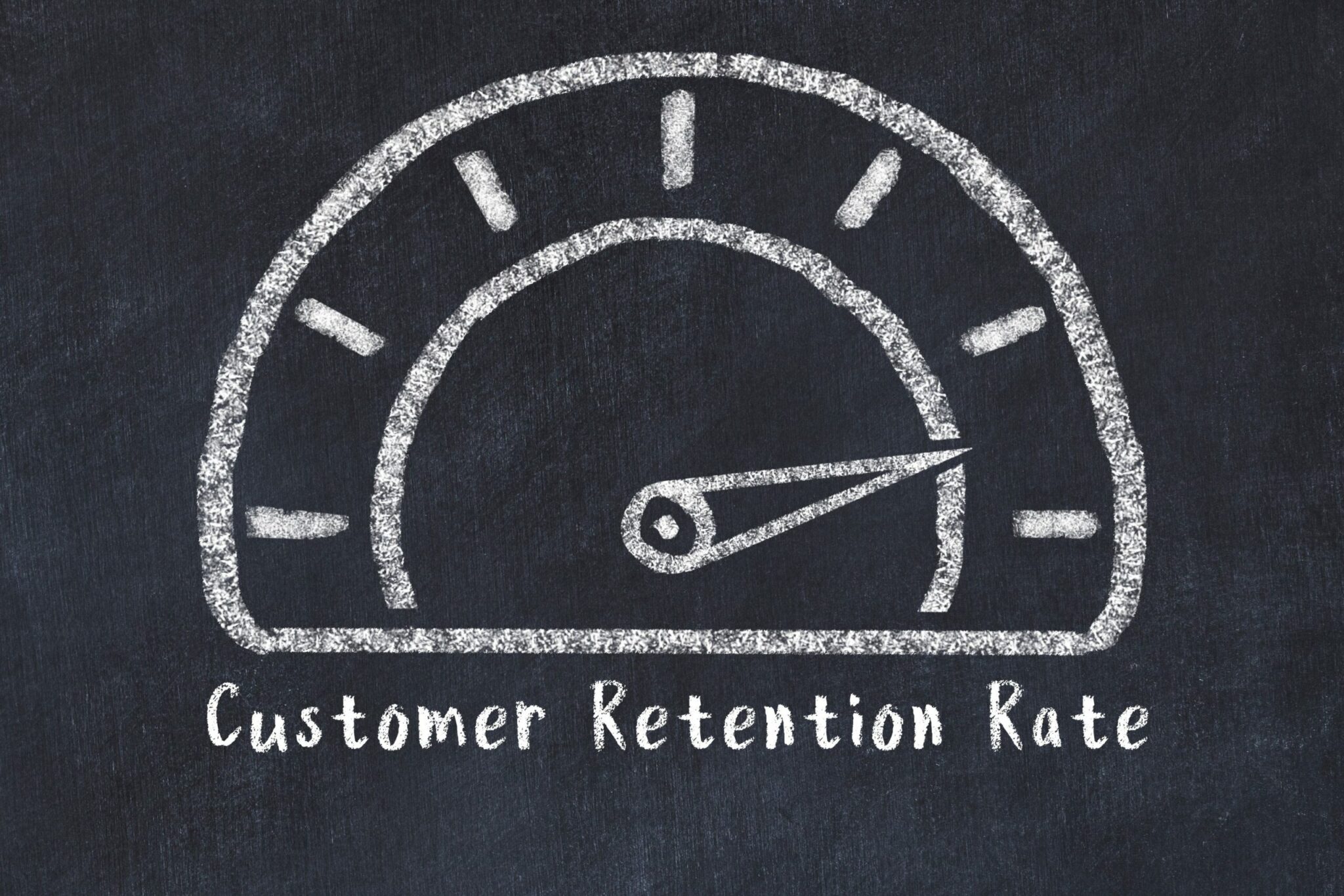If you’re running a business, tracking your customer retention metrics is important.
These customer retention metrics will help you gauge how successful you are at retaining your existing customers and whether or not you need to make changes to your business strategy.
This article will discuss eight essential customer retention metrics you should track. We’ll also provide tips on how to measure these metrics effectively and provide a comprehensive solution on how to increase customer retention rates.
Let’s get started!
Customer Retention Metrics
- Customer Retention Rate
- Days Sales Outstanding
- Repeat Purchase Rate
- Product Return Rate
- Customer Churn Rate
- Revenue Churn Rate
- Time Between Purchases
- Customer Lifetime Value
What Are Customer Retention Metrics?
Customer retention metrics are the customer behavior data points that businesses track to measure how successful they are at retaining customers. They are important because they can tell you how healthy your customer base is and how likely customers are to keep doing business with you.
There are a variety of different customer retention metrics that you can track, but the most essential are those that reflect how often customers are purchasing from or interacting with your business.
However, all of these customer retention metrics are good indicators of customer loyalty and can help you determine whether you need to make changes to your business to keep more customers around.
Businesses can use customer retention metrics to determine which marketing and sales initiatives are most effective at retaining loyal customers or use them to identify potential areas where they may be losing customers.
Here are four tips to increase your customer retention metrics:
- Create a newsletter
- Communicate with your customers
- Personalize your marketing strategy
- Start a customer loyalty reward program
By tracking customer retention metrics, businesses can work to improve their customer retention rate and increase their profits. Let’s explore the eight customer retention metrics businesses should pay attention to.
Customer Retention Rate
A customer retention rate is the number of customers who continue to do business with you after their first purchase and directly relates to your customer lifetime value.
To calculate customer retention rate, divide the number of customers who made a second purchase by the total number of customers who made the first purchase during a given time period.

This customer retention metric is important for businesses to track because it can indicate whether they are doing something right with their existing customers or if they need to make some changes.
There are several ways to improve your customer retention rate:
- Deliver on promises
- Solve problems quickly
- Make doing business easy
- Show customer appreciation
- Offer great customer service
- Give incentives to new customers
- Create a positive customer experience
Days Sales Outstanding
Days sales outstanding (DSO) is a customer retention rate that measures how long it takes a company to collect revenue from its customers. DSO is calculated by dividing the total amount of accounts receivable by the average daily sales.
This customer retention metric can be used to assess a company’s liquidity and cash flow. It can also be used to measure the efficiency of a company’s collections process, as well as the number of customers acquired.
These are some tips to increase DSO:
- Improving customer relations
- Offering online payment options
- Offering discounts for early payments
- Implementing better collections procedures
Repeat Purchase Rate
As a customer retention metric, the repeat purchase ratio is the number of customers acquired by a business who make a second purchase after their first purchase.
The best way to calculate repeat purchase rates is by simply dividing the number of repeat customers by the total number of existing customers.
As one of the customer retention metrics, it can help you understand who your most loyal customers are and how likely they are to return in the future.
Here are a few ways to increase repeat purchase ratios:
- Keep prices competitive
- Listen to customer feedback
- Send personalized reminders and offers to customers
Repeat purchase rates can vary depending on your industry and the type of product or service you offer.
However, a healthy repeat purchase rate is typically somewhere between 20 and 30 percent. If your repeat purchase rate falls below 20 percent, it may be time to consider making some changes to your product or service to improve customer satisfaction.
Product Return Rate
As a customer retention metric, the product return rate is the percentage of products that are returned by existing customers.
This customer retention metric can be used to measure customer satisfaction and to determine whether or not a business is meeting customer needs.
This customer retention rate can be calculated by dividing the number of products returned by the number of products sold.

A high product return rate may indicate that a business is not providing the products or services that customers want or need, or that customers are dissatisfied with the quality of the products or services offered.
There are a few ways you can lower product return rates, such as:
- Simplifying the return process
- Increasing customer satisfaction
- Improving the quality of products and services
Customer Churn Rate
Customer churn rate is a key performance indicator (KPI) used to measure the health of a business and is one of the most important customer retention metrics.
It is measured by dividing the number of customers who left during a specific time period by the total number of existing customers at the beginning of that time.
Many factors can affect customer churn rates. Some of the most common causes of customer churn are changes in a company’s products or services, poor customer service, and high prices, which can be damaging to your overall customer lifetime value.
To reduce the rate of churned customers, businesses should identify the factors that are causing their repeat customers to leave and take steps to address those issues.
These are tips you can follow to decrease customer churn rates:
- Offer reduced prices
- Increase customer loyalty
- Improve customer lifetime value
- Offer new products and services
Revenue Churn Rate
Revenue churn is the rate at which a company’s revenue declines or increases due to customer churn rate and can help you determine your business’s monthly recurring revenue.
To calculate revenue churn rate, simply divide the change in revenue by the average number of customers over a sale period.
The revenue churn rate can be an indicator of how successful a company is at customer retention.
A high revenue churn rate could be a sign that an existing customer is unhappy with the company’s products or services, or it could simply mean that the company is not doing a good job of expanding its customer base.
However, to improve customer retention metrics, it is important to understand what is causing customers to leave.
Some common causes of revenue churn include:
- High prices
- Poor service or product quality
- Difficulties with signing up or using the product
- Lack of features or functionality compared to competitors
Time Between Purchases
The time between purchases is important in tracking customer retention because it can help you understand how likely new customers are to return. This customer retention metric can be calculated by dividing the number of days between purchases by the number of customers you have.
If existing customers aren’t using your product right away, or if they’re not seeing value right away, you may need to work on your onboarding process or messaging to ensure they come back for more.
There are a few ways to improve this customer retention rate:
- Making it easier for customers to make purchases
- Offering incentives for customers to make purchases
- Encouraging customers to make more frequent purchases
Customer Lifetime Value
Customer lifetime value is the total revenue a customer generates for your business over the entire course of their relationship with a company.
If you want to calculate customer lifetime value, multiply the average purchase amount by the average number of purchases made per year, then divide that figure by an individual customer retention rate.
Boosting customer lifetime value is one of the most important of all the customer retention metrics for companies to track, as it can help them make more informed decisions about where to allocate their marketing resources and how best to keep loyal customers engaged.

Here are some ways to improve customer lifetime value:
- Reducing customer churn rates
- Increasing average order values
- Improving customer retention rate
- Increasing the number of customers acquired
By understanding your customer lifetime value, you will be able to determine which customers are most valuable and focus on retaining those loyal customers, which will ultimately improve your customer retention rate.
Closing it Out!
Improving customer retention metrics can be a challenge, but it’s important to identify any factors that are causing existing customers to leave and take steps to address those issues.
By understanding your customer lifetime value, you can make more informed decisions about where to allocate your resources and how best to keep your loyal customers engaged with your business.
Do you track any of these customer retention metrics already in your business? Are there any other essential customer retention metrics you think businesses should track? Let us know in the comments below!


